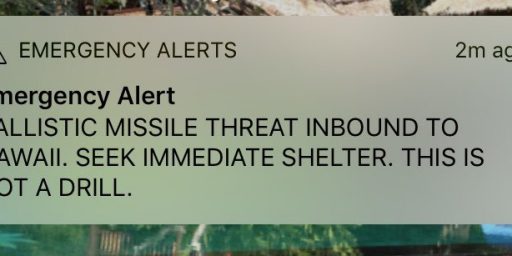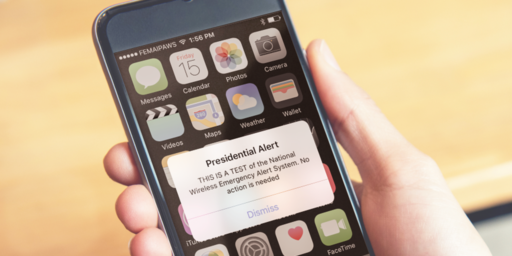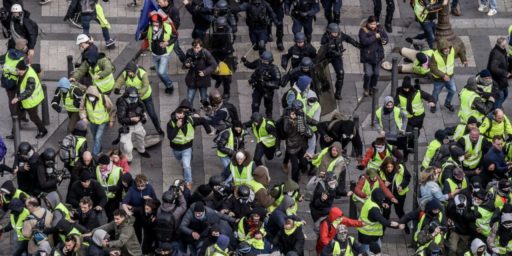Two-Point Scales
John Quiggin observes,
I’ve been reading Steven Poole’s Unspeak and he observes that having introduced a five-level color coded terror alert, the government has never used the top level (red) or the bottom two levels (blue and green). The obvious reason is that a red alert would require some specific action, while a move to a blue or green level would imply that there was some prospect of the War on Terror actually ending.
Alas, more diligent reading of OTB could have saved him the cost of the book. On April 16, 2003, I mused, upon receiving news the threat level had been lowered to Yellow,
One wonders if we’ll ever get below yellow again. The incentives for bureaucracies to lesson fears is small, since it would not only mean a cut in their budget at some point but will increase their responsibility if and when another attack occurs.
On December 22, 2003, I expanded on the theme:
Since the inception of the system, we have always been in either Elevated or High status. Because the level is set by a bureacracy, it will likely always be either Elevated or High. No bureaucrat is going to be willing to take the risk of lowering the level to merely Guarded or—Heaven forfend—Low because, if they do, and an attack happens, heads would roll. Likewise, we’re unlikely to see the level raised to Severe unless we’re literally in the midst of an attack and already know it. No one is going to be willing to call Red Alert and then not have an attack happen.
In between those postings, Frank J posted his A Frank Guide to Homeland Security Alert Levels, which remains the best parody of the system I’ve seen.
UPDATE (8/10): Sadly, this has been overtaken by events in less than 24 hours. The Brits have raised their alert level to “Critical,” their highest, and the US has gone to “Red,” our highest, for US-UK flights following a foiled terror plot.





Do a similar study on ‘fire risk’ in national parks (hopefully as non-partisan similar item as we can find). You will likely find more extremely red alerts (aka forest fire happening right now), but I bet you find precious few ‘no problem’ greens.
Another way to look at it would be the defcon levels during the cold war. But I think the defcon levels were used to “send a message” to Russia, so they may not be as good of proxy.
Yes, if we want to send a message to terrorists, we just invade another random country. (/snark)
Thanks, James, that’s one of my all time favorite posts I wrote.